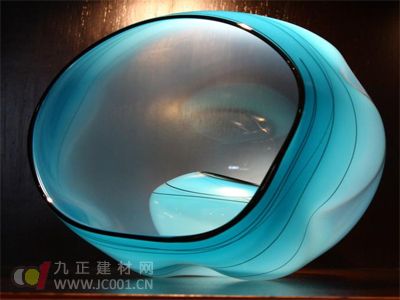Glass art refers to glass creations that embody the artist's vision, reflect modern life's inspiration, and possess artistic, decorative, humanistic, and collectible value. It is a unique form of expression that blends creativity with craftsmanship, making it more than just a functional object.
**Development Overview**
**Foreign Development:**
Glass has a long history, with Western glassware dating back over 3,500 years. The study of glass has been deeply explored for centuries. During the Roman era, glass was considered a luxury item but not always seen as an art form. In 1970, the Royal Academy of Fine Arts in the UK introduced glass art as a formal discipline, marking the beginning of its academic recognition. Though only 40 years old, glass art has developed a clear framework, scientific standards, and a strong artistic identity since its establishment in educational institutions.

**Domestic Development:**
In the West, glass art is a prominent and valuable part of the art market, often commanding high prices. China has a rich history of glass-making, yet traditional Chinese glass art has not gained widespread recognition in the collecting world. It has often been viewed as cheap craftwork rather than high-value art. This misunderstanding has hindered its growth. Chinese glass art originated from the University of Wolverhampton in the UK, which is considered the birthplace of modern Chinese glass art. Today, there are glass museums like the Shanghai Glass Museum and online platforms dedicated to glass art. Notable artists include Zhuang Xiaowei, director of the Shanghai Museum, and Yang Huizhen, founder of Liuli Workshop.
**Collection Value**
The value of glass art can be assessed in three key aspects: material, technique, and aesthetic. Different types of glass can vary dramatically in value. The artistic merit depends on how well the creator expresses their vision through skill and imagination. Aesthetic value determines the depth and quality of the work. Glass art demands both technical mastery and creative insight, making truly exceptional pieces rare and highly sought after by collectors in the West. Some works have sold for millions of dollars.
While "heavy materials and light craftsmanship" is a common standard in jade collecting, experts argue that overemphasizing material alone is an immature approach. The perceived value of materials like jade or gold is subjective, shaped by culture and rarity. Historically, glass was known as “璆ç³â€ and “Land†in China, one of the earliest and most expensive man-made materials, reserved for the elite. Today, despite its everyday use, the artistic value of glass is often overlooked.
**Future Prospects**
The Western glass art market is mature, with well-established systems for identification, valuation, collection, and trade. Artists are often academics, and their works are clearly understood by collectors. There are many professional glass artists, and their works are consistently supported by a dedicated audience. Specialized galleries and museums further support the industry.
In China, there are currently around 18 active glass artists, most of whom follow the Western model. Only a few have established international collectors, while domestic interest remains limited. Similar to early Chinese contemporary art, much of the work is better recognized abroad. However, the price of domestic glass art is still relatively low compared to the global market. As demand for art investments grows among mainland collectors and institutions, glass art is expected to become a major player in the domestic market. Currently, it is undervalued, but this is likely to change as awareness and appreciation increase.
Table Light,Table Lamp,Desk Light,Desk Lamp
Ningbo Royalux Lighting Co., Ltd. , https://www.royaluxlite.com